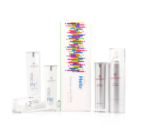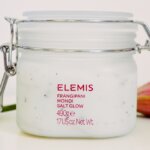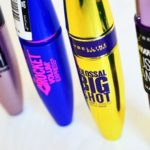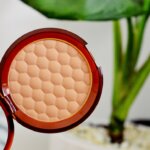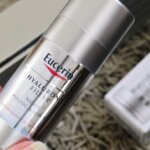Dealing with what you can control and the tests that assist with those you can’t control. October is International Breast Cancer Month and the ideal time to be focusing and spreading awareness of the potential risk factors that can assist in delaying age-related diseases and possible genetic predisposition to cancers, enhancing the overall wellness and vitality of women and men with optiphi® Helix.
Skin Rejuvenation Technologies, a subsidiary of of the Southern Medical Group, is the driving force behind optiphi® Helix. As a scientific brand we strive to continually educate not only about skin care, but also on a holistic approach to general longevity.
In 2019, optiphi® developed an advanced genetic laboratory to evaluate and identify the genetic risk factors of associated with skin concerns, health and diet and more specifically, breast cancer by means of genetic profiling. By understanding these risks, you are empowered to improve overall breast health.
Breast cancer is the most common cancer affecting women today and in 2020 it is estimated that 1.7 million women will be diagnosed with breast cancer!
Interestingly, whilst the risk for breast cancer incidence increases with age it also commonly occurs in younger women below the age of 35. According to the World Health Organization (WHO) 2012 the two components that can reduce mortality of breast cancer are:
– Education
– Screening programs
It is important for women to be educated regarding their potential cancer risk and spotting the warning signs. Medical examinations and cancer screening for early detection are important as symptoms don’t always present until cancer has spread.
1. One can reduce the risk through regular self-examination. Educate yourself on how to perform a self-breast examination on www.cansa.org.za . Should you identify a suspicious lump or change in your breasts contact your health care practitioner. A self-breast examination should be done once a month preferably at the same time of day, following a menstrual cycle.
2. Breast cancer screenings are recommended for women older than 40 years and it is suggested that women have a clinical breast examination as part of their annual checkup with their medical practitioner. Should any abnormalities be detected the person will be sent for further testing such as a mammogram and ultrasound. Awareness surrounding breast cancer is incredibly important as early detection, often through screening, can catch the disease when it is most treatable.
– It is recommended that women from the age of 40 should go for an annual mammogram,
for purposes of non-symptomatic breast screening.
– Women 55 years and older should have a mammogram every two years – or if they
choose, continue with an annual mammogram.
– Women, who have other risk factors such as mutated BRCA1 /2 gene, should be referred for an annual mammogram.
Finding breast cancers early with self- breast examination, ultrasound and mammography has also meant that many more women being treated for breast cancer are able to keep their breasts. When caught early, some cancers can be removed without having to remove the breast (mastectomy).
Genetic risks for breast cancer:
Knowing and understanding your risk factors for breast cancer is essential for preventative
treatment strategies. These risk factors can be classified into those that you can control and those
that you cannot control.
If we look at some of the factors that you can control, these include;
• Weight- being overweight can increase the risk of cancer, especially after menopause.
• Alcohol consumption- The more alcohol an individual drinks, the higher their risk for
cancer.
• Diet high in saturated and trans fatty acids – A poor diet has been linked to increased
cancer risk, Try to eat lots of fruits and vegetables, lower your sugar intake and plan
balanced meals
• Lack of exercise – research indicates that regular physical activity in combination with
clever food choices can help lower the risk for cancer
• Smoking is unhealthy and increases the risk of cancer
• Exposure to oestrogen – studies show that menopausal hormone therapy increases the
risk of breast cancer especially if used long term.
• Recent oral contraceptive use (females) – younger women taking birth control pills have
a slightly increased risk but the risk goes away quickly after stopping the pill.
• Sexually transmitted diseases
• Vasectomy (males)
It is never too early to start with a healthy lifestyle. Growing evidence shows that the youth and young adult years are significant times for helping prevent breast cancer later in life. Taking this into account, considerable changes can be made to your diet, lifestyle and environment to reduce your overall risk of cancer.
Unfortunately some risk factors are uncontrollable, meaning you cannot minimize the risk as you may not be able to change these aspects. Knowing which ones apply to you can help you understand your risk and do what you can to lower it. These can increase a woman’s breast
cancer risk:
– Gender, race and age, particularly older age, 60 years and over
– Nulliparity (females) – never having given birth or first child birth after age 35
– Family history of breast cancer
– Personal history of breast cancer
– Exposure to radiation
– Changes in your breast – dense breasts, hyperplasia
– Carriers of genetic risk mutations
For this reason, it is important to look at the potential that genetic testing can have on expanding our awareness on certain genetic risk factors that we have no control over. Knowing and understanding your genetic risk creates that added awareness enabling you to promote more regular self-screenings, check ups and other preventative measures.
Dr Samantha Baron of optiphi® Helix says” Genetic testing for breast and ovarian cancer cannot be used as a diagnostic tool, but rather an instrument to determine one’s potential future risk. This odds ratio is not a diagnostic value, but merely a guide to determine the risk ratio from a genetic perspective, it is not intended to be a diagnosis or prediction for future health.
The genetic risk for breast cancer is considered to be a polygenic model (involving more than one gene) and so looking at several genes is imperative when determining the potential genetic risk of an individual. Each single nucleotide polymorphism (SNP) will carry a different weight (risk ratio) which will also depend on if it’s a heterozygous/homozygous mutation. The combination of these risk ratios is what determines a persons overall genetic risk. In most instances, you will see that one SNP alone carries a rather small (sometimes insignificant) risk but certain SNPs together increase your risk. These factors are all considered when you do genetic risk screening.
The intention of the optiphi® Helix Breast, Ovarian and Prostrate Cancer Risk Test is to screen a panel of markers that have been commonly associated with the development of breast cancer with some markers also associated with increased risk for ovarian and prostate cancer. The screening of these markers creates awareness to the potential risks associated with these cancers. Therefore, optiphi® has selected a panel of markers in the BRCA1, BRCA2, ATM, CHEK2, TP53, NBN and PALB2 genes which together may contribute to an increased genetic risk.”
“In lieu of breast cancer awareness month I would like to share my perspective as a plastic and reconstructive surgeon and a patient. Most people who develop breast cancer have no family history of the disease. However, when a strong family history of breast and/or ovarian cancer is present, there may be reason to believe that a person has inherited an abnormal gene linked to higher breast cancer risk. Everyone is born with BRCA 1 and BRCA 2 genes, which typically help fight cancers. But some mutations in BRCA genes prevent them from working, which leads to cancer formation. Despite the challenges of dealing with the genetic information and its aftermath, I am grateful that I was tested and learnt about the mutation before I was diagnosed with cancer.” – Dr Liana Volkwyn, Plastic & Reconstructive Surgeon, MBCHB (Pretoria) | FC Plastic Surg (SA)
There has been much advancement in recent years in the identification of genetic mutation that affect individuals and cancer. It has been estimated that about 20% of female breast cancers are due to inheritance of a number of genetic changes (mutations). Genetic testing can be done to look for inherited mutations in the BRCA1 and BRCA2 genes (or less commonly in genes such as TP53, or others mentioned above). This might be an option for some women who have been diagnosed with breast cancer, as well as for certain women with factors that put them at higher risk for breast cancer, such as a strong family history.
“Breast Cancer has always been something I have grown up being very sensitive to and aware off. I have a family history of Breast Cancer, and as a young girl watching my mom go for regular checkups and always self-examining set the foundation for me.
During this pandemic, I kept putting off my Mammogram in order to avoid any form of medical facility and the unnecessary risk to Covid-19.
However, little did I know, that by doing that, I was potentially putting myself at bigger risk. I was approached by optiphi® to see if I would like to try out their skin care range. I welcomed the invitation, which came with the Helix genetic and DNA profile test.
When I got my results it again confirmed that I was in the high-risk category for Breast Cancer. When I
told my mother, this moved her into action and she decided to book us both a mammogram, as she had
also been delaying her annual screening. When I went a week later, it was discovered that I had a small tumor, which after almost 48 painful hours, I found out was benign! So many things went through my mind at that time and I just kept imagining if I had left it for it longer and if it grew and if it was in fact cancerous – what then? It was a very big wake up call for me and an amazing intervention. I urge all women out there to have their annual mammograms- the quicker you catch it the better your chances are!
Don’t let anything stand in your way of living a full beautiful life!” – Leanne Mannas, Multiple award-winning Broadcast Anchor, MC, Motivational Speaker and UNHCR Goodwill Ambassador.
Let’s come together to improve the awareness and invest in knowing our individual potential risks regarding Breast, Ovarian and Prostate cancers and be empowered to make lifestyle choices to improve our overall wellness.
For more information on where to purchase an optiphi® Helix Breast, Ovarian and Prostrate Cancer Risk Test email [email protected] or visit www.optiphi.com.

